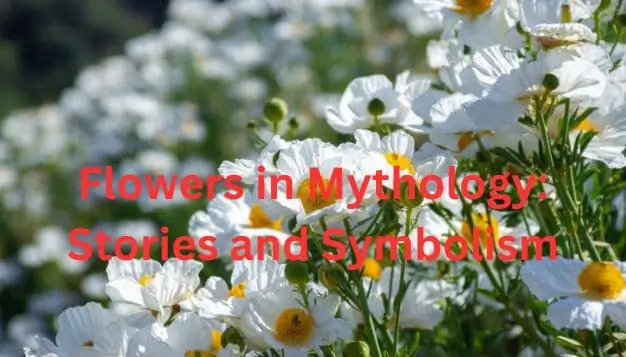Flowers have played a significant role in human culture throughout history, serving as symbols of beauty, love, and various emotions. In mythology, flowers take on a profound significance, often weaving intricate stories and symbolism into the fabric of ancient tales. Across different cultures and civilizations, flowers have been associated with gods, goddesses, heroes, and mystical creatures, adding layers of meaning to the narratives.
Flowers have long held symbolic meaning in myths, legends, and folklore around the world. Many cultures have used flowers as symbols, assigning various attributes and stories to explain their significance. Looking at some of the myths and symbolism associated with various flowers provides insight into how they have captured the human imagination.
This exploration delves into the rich tapestry of floral mythology, highlighting stories and symbolism that transcend time and continue to captivate our imaginations.
Floral Symbolism Across Cultures
- Lotus in Eastern Mythology: In Eastern mythology, particularly in Hinduism and Buddhism, the lotus flower holds profound symbolism. Emerging from the muddy waters, the lotus represents purity and enlightenment. In Hindu mythology, deities like Lakshmi, Saraswati, and Brahma are often depicted seated on lotus thrones, symbolizing divine beauty and transcendence.
- Rose in Greco-Roman Mythology: The rose, with its enchanting fragrance and delicate petals, is deeply rooted in Greco-Roman mythology. According to Greek mythology, the rose was created by the goddess of love, Aphrodite, and was associated with her son, Eros. In Roman mythology, the rose was linked to Venus, the goddess of love and beauty. The red rose, in particular, became a symbol of romantic love and passion.
- Cherry Blossoms in Japanese Mythology: Cherry blossoms, or sakura, hold great significance in Japanese mythology. They represent the transient nature of life and the beauty of fleeting moments. The blooming of cherry blossoms is associated with the Shinto goddess of rice and fertility, Inari. The falling petals symbolize both the ephemeral nature of life and the honorable death of samurai warriors.
Stories of Transformation
- Hyacinth in Greek Mythology: The story of Hyacinth in Greek mythology is a tale of tragic beauty. Hyacinth was a handsome Spartan youth loved by both the god Apollo and the West Wind, Zephyrus. In a fit of jealousy, Zephyrus caused a discus thrown by Apollo to strike Hyacinth, fatally wounding him. From Hyacinth’s blood, the hyacinth flower bloomed, becoming a symbol of rebirth and the fleeting nature of life.
- Narcissus in Greco-Roman Mythology: Narcissus, a beautiful youth known for his self-love, fell in love with his own reflection in a pool of water. Unable to tear himself away, he eventually withered away and transformed into the narcissus flower. This myth serves as a cautionary tale about vanity and the consequences of self-obsession.
Divine Connections
- Iris in Greek Mythology: In Greek mythology, Iris is the goddess of the rainbow and a messenger between the gods and humanity. She is often depicted with wings and a caduceus, and her name means “rainbow” in Greek. Iris was considered the link between the earthly realm and Mount Olympus, and her association with the rainbow connects her to the fleeting beauty of this natural phenomenon.
- Blue Lotus in Ancient Egyptian Mythology: The blue lotus held immense significance in Ancient Egyptian mythology. It was associated with rebirth and the afterlife. Depicted in various religious and funerary contexts, the blue lotus was believed to bring about spiritual awakening and transformation, guiding the deceased to the eternal journey beyond life.
Conclusion
Flowers in mythology are not mere decorative elements but powerful symbols that convey deep meanings and lessons. From tales of tragic love to narratives of divine connections, the stories surrounding flowers span cultures and epochs, reflecting the universal human experience.
As we continue to appreciate the beauty of flowers in our daily lives, it’s worth remembering the timeless tales and symbolism that have been woven into these delicate petals throughout the ages. The myths endure, connecting us to the wisdom of the past and enriching our understanding anatomy of flowers in the human story.

